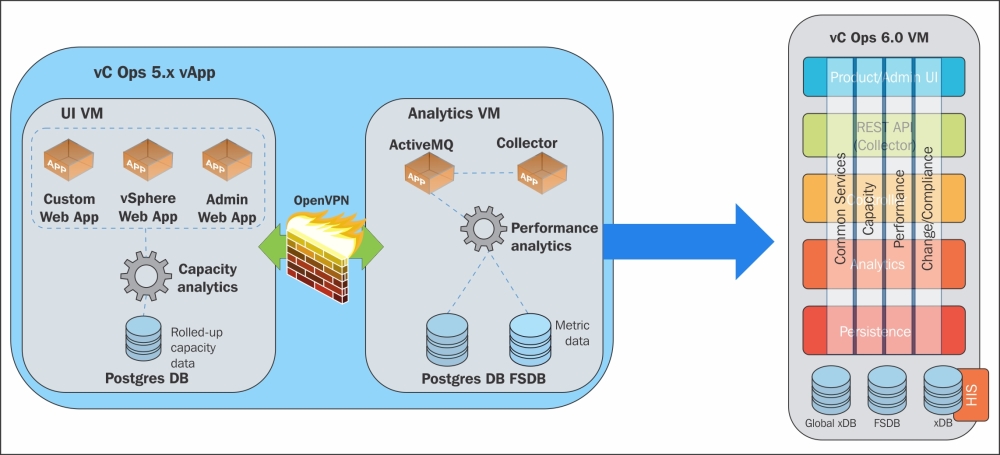In vRealize Operations Manager 6.0, a new platform design was required to meet some of the required goals that VMware envisaged for the product. These included:
The ability to treat all solutions equally and to be able to offer management of performance, capacity, configuration, and compliance of both VMware and third-party solutions
The ability to provide a single platform that can scale up to tens of thousands of objects and millions of metrics by scaling out with little reconfiguration or redesign required
The ability to support a monitoring solution that can be highly available and to support the loss of a node without impacting the ability to store or query information
To meet these goals, vCenter Operations Manager 5.x (vCOps) went through a major architectural overhaul to provide a common platform that uses the same components no matter what deployment architecture is chosen. These changes are shown in the following figure:

When comparing the deployment architecture of vROps 6.0 with vCOps 5.x, you will notice that the footprint has changed dramatically. Listed in the following table are some of the major differences in the deployment of vRealize Operations Manager 6.0 compared to vRealize Operations Manager 5.x:
Many of these major differences will be discussed in detail in later chapters. However, the ability to support new scaled out and highly available architectures will require an administrator to consider which model is right for their environment before a vRealize Operations Manager 6.0 migration or rollout begins.



